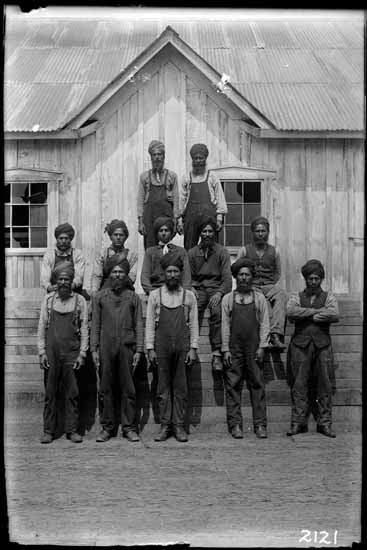| The Fifty | ||||
January 22, 2014: The Canadian fifty dollar note is an ironic symbol for Sikh’s in Canada, at least it is for me. The fifty-dollar note has been my gift of choice at large Sikh weddings and at birthday celebrations as well. The distinctly red bill, with its soothing subtleties and prominent markings, is unmistakable. It embodies success, power, and pageantry to the Sikhs that gift it to each other on auspicious occasions. Yet as prominent as the markings and the red hue that gives the fifty-dollar note its distinction is the imprint of William Lyon Mackenzie King. The imprint is an ode to King, a testament to the enduring legacy of a great Canadian statesman. After all, it is only the great, the visionaries, and the virtuous, - that are enshrined on our currency as a constant reminder of their importance. However after learning of the Komagata Maru, the only thing I see when I look into the eyes of the imprint of Mackenzie King is the searing glare of a man who would have utter distain at the thought of me, a first-generation Canadian Sikh with “British East Indian” parents, holding a fifty-dollar note on Canadian soil. In 1908, as Deputy Minister of Labour for the Canadian government, King authored a report that sought to tighten immigration policies for migrants from the Orient and India. Like many before him, and like many after him, he made a number of dubious assumptions about the Sikhs. King assumed that Sikhs were not able to adapt to the harsh Canadian climate, and that their presence would disrupt the economy and industry of Canada, particularly in British Columbia.
King was just one of many on a long list of leaders in history that have underestimated the resiliency of Sikhs. The Moghuls doubted the Sikhs, the British underestimated the Sikhs and Mackenzie King was wrong about the Sikhs. The Moghul’s and Brits were transparent with the positions they took regarding Sikhs. While they were entirely wrong, unlike Mackenzie King, they had the courage of their convictions to speak openly about their distain of Sikhs. Upon migrating to Canada, Sikhs were told in no uncertain terms that we did not belong here, and that we would not thrive here, and in fact, that we were a burden to the economy and to the social fabric of Canada as a whole. But the Sikhs endured, and 100 years later, are intertwined in the social, economic and political fabric that makes up Canada. Today, Sikhs in Canada feel an overarching sense of pride when a fellow Indo-Canadian has reached the pinnacle of his or her field. When I hear of a Canadian Sikh reaching public office or attaining entrepreneurial success, I swell with pride as if it were my own son or daughter. This enduring pride stems from a collective memory of exclusion and adversity overcome – a collective memory epitomized by the Episode of the Komagata Maru. The story of the Komagata Maru is a story with many layers and two overarching narratives. The first narrative is encompasses the Canadian government’s racist, close-minded, and oppressive systemic attempt to thwart the advancement of Sikhs by quashing what should have been a legal migration in to British Columbia. However, a second and more poignant narrative is the history of Indo-Canadian Sikhs in the 100 years following the incident. Upon arriving to Canada, Sikhs have had two options: fight or flight. Given our history in India, it is no surprise that in the years following the Komagata Maru, Indo-Canadian Sikhs have dug in their heels and fought for a better life for their families. Like the underestimated athlete who was always told he could never make it, Sikh’s have adopted a ‘we will show you’ mentality. As I hold that fifty-dollar note in my hand and stare back in the eyes of that searing glare, I can’t help but smirk and ask the image looking back at me: ‘Mr. King, how do you like us now?' Andy Hayher is a lawyer in Calgary, Alberta who practices with the firm Vogel LLP in the area of Family Law. |



